
Sources of central gas supply
Description:
Gases in piped medical gas and vacuum systems are
supplied from central supply sources in the hospital. This
session provides an overview of cylinder manifolds, liquid
oxygen stores and the oxygen concentrator.

Session introduction
learning objectives: By the end of this session
you will be able to
Define the key components, functionality and
safety features of cylinder manifolds.
Recognize the important aspects of liquid
oxygen stores (vacuum insulated evaporators)
and their associated safety features.
Recognize the key components, functionality
and safety features of oxygen concentrators.
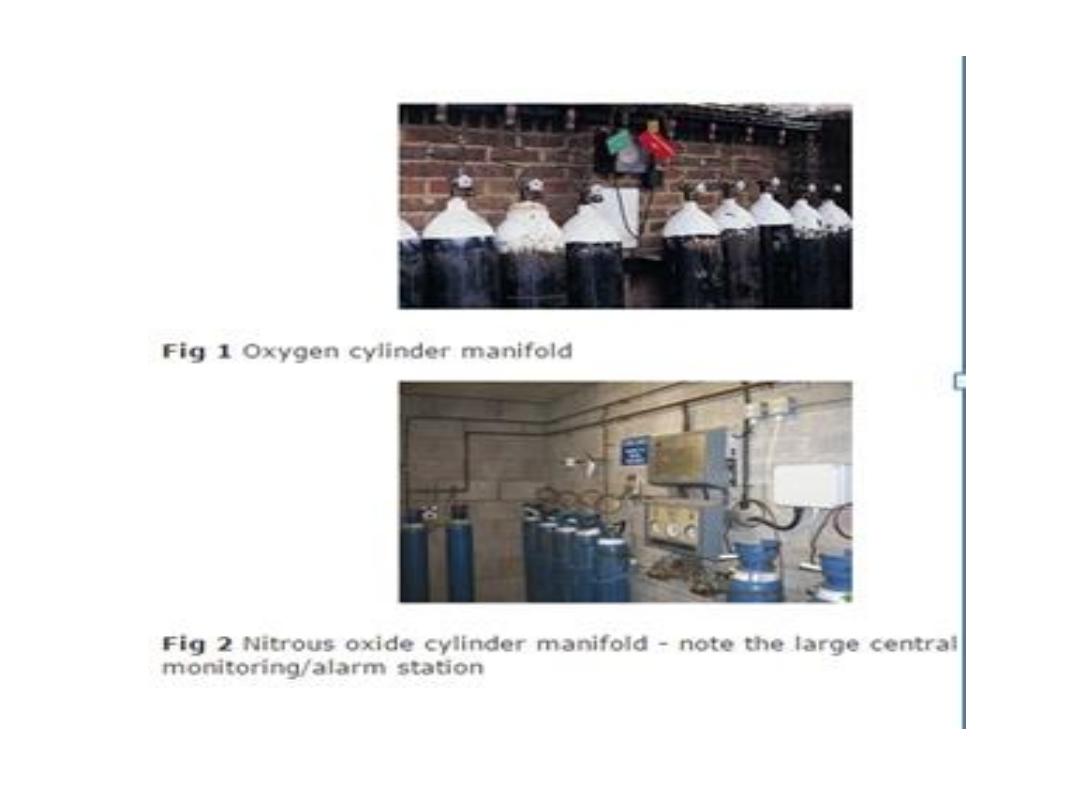
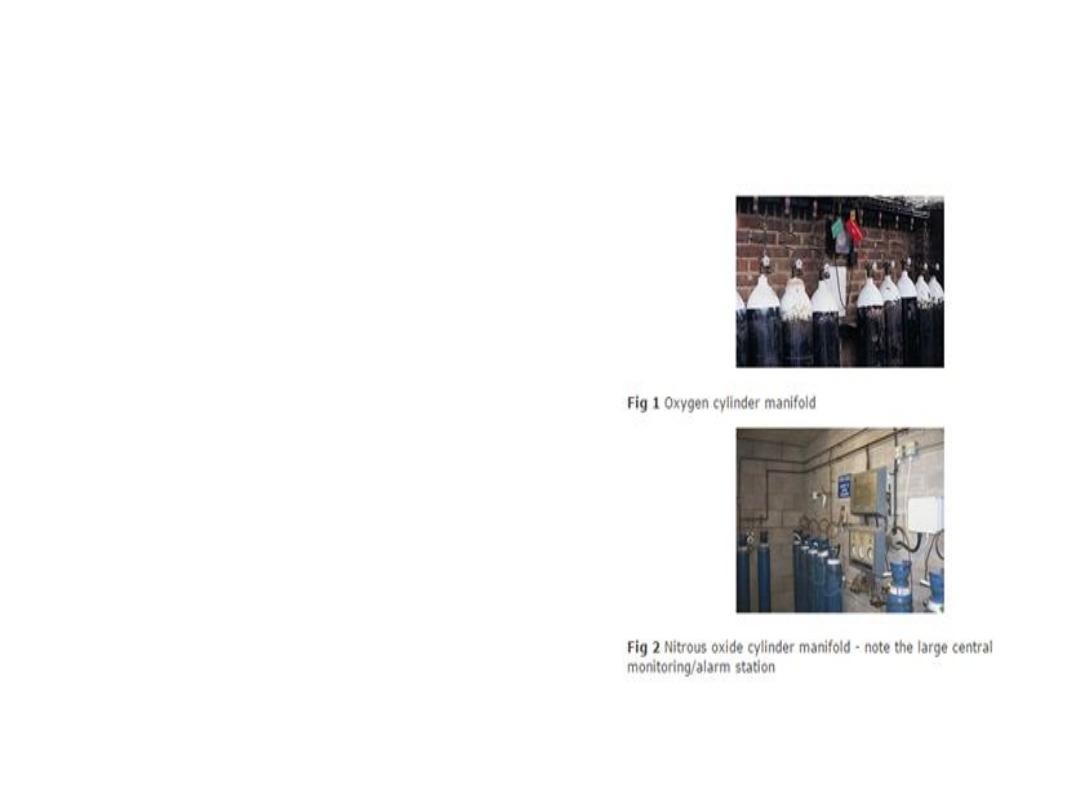
Cylinder manifold
one source of central medical gas supply is
central manifolds. These are used to supply
nitrous oxide, entonox and oxygen at a constant
pressure. This is normally achieved via a control
panel from tow equal banks of large cylinders e.g.
large J known as:
Duty banks
Standby banks
The cylinders in each bank are connected through
non return valves to a common pipe. All cylinders
in each bank are turned on and interconnected.
The duty and the standby banks alternate in
supplying the pipe lines. The changeover from
one to the other is an automatic process.
Oxygen can also be supplied from vacuum
insulated evaporators were it is stored as liquid
oxygen or from large oxygen concentrators.
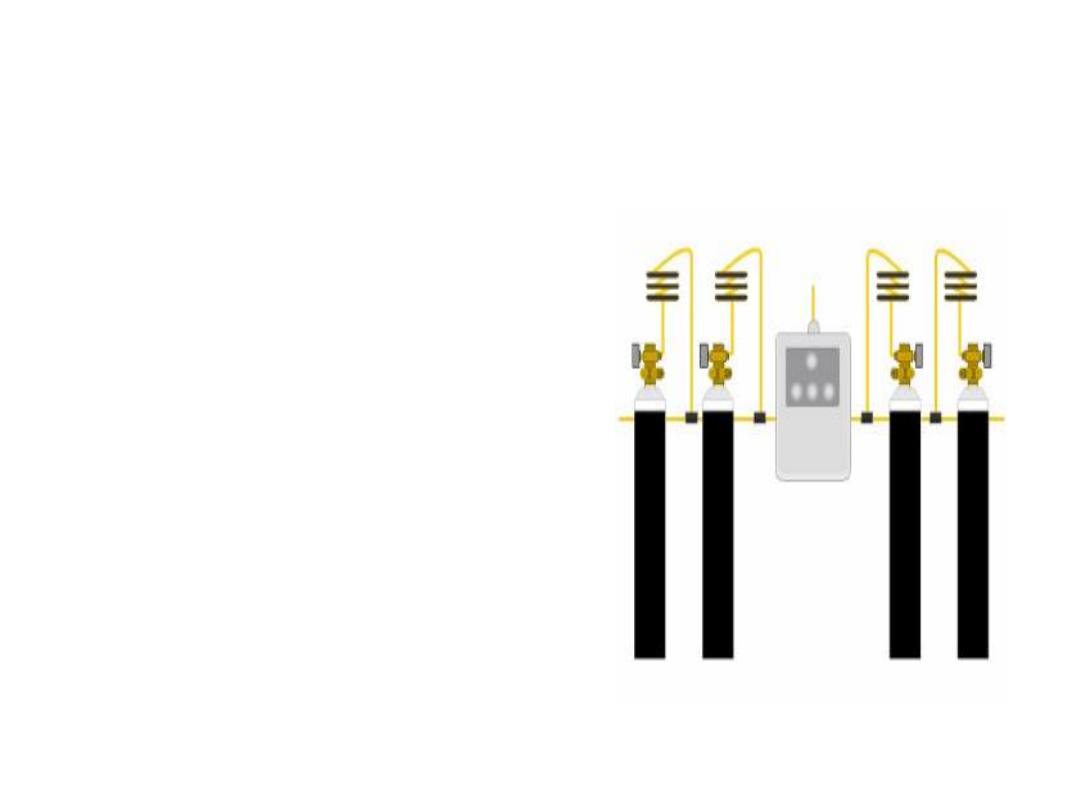
Automatic changeover
automatic changeover from the duty
to standby bank should occur at a
cylinder pressure that will ensure the
maximum usage of the contents of
the duty bank. Each bank of cylinders
has separate pressure regulator
valves.
Although the pipelines are fed from
pressure regulators and work at
about 400 KPa, changes in demand
can lead to small fluctuations in
pipeline pressure. Pressure gauges
are also use to indicate cylinder bank
pressures and distribution pressure.
The number of cylinders in each
bank is determined by expected
demand.
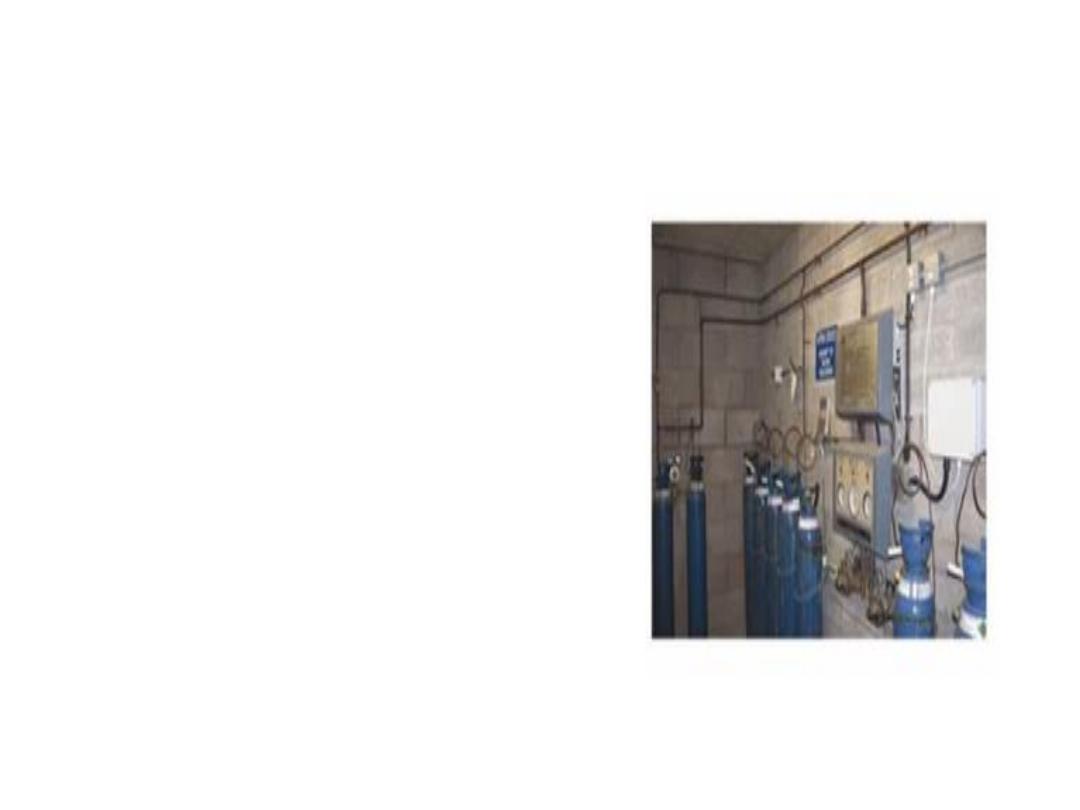
Automatic changeover
The total storage capacity:
It should be one week supply.
Each bank of cylinders should
contain not less than two days
supply, with a three days supply
of spare cylinders kept in the
manifold room.
The nitrous oxide manifold is
often larger than oxygen
manifold. This is because nitrous
oxide is present in cylinders only,
whereas liquid oxygen is normally
used to supply piped oxygen in
hospitals, so the oxygen manifold
is a back up.
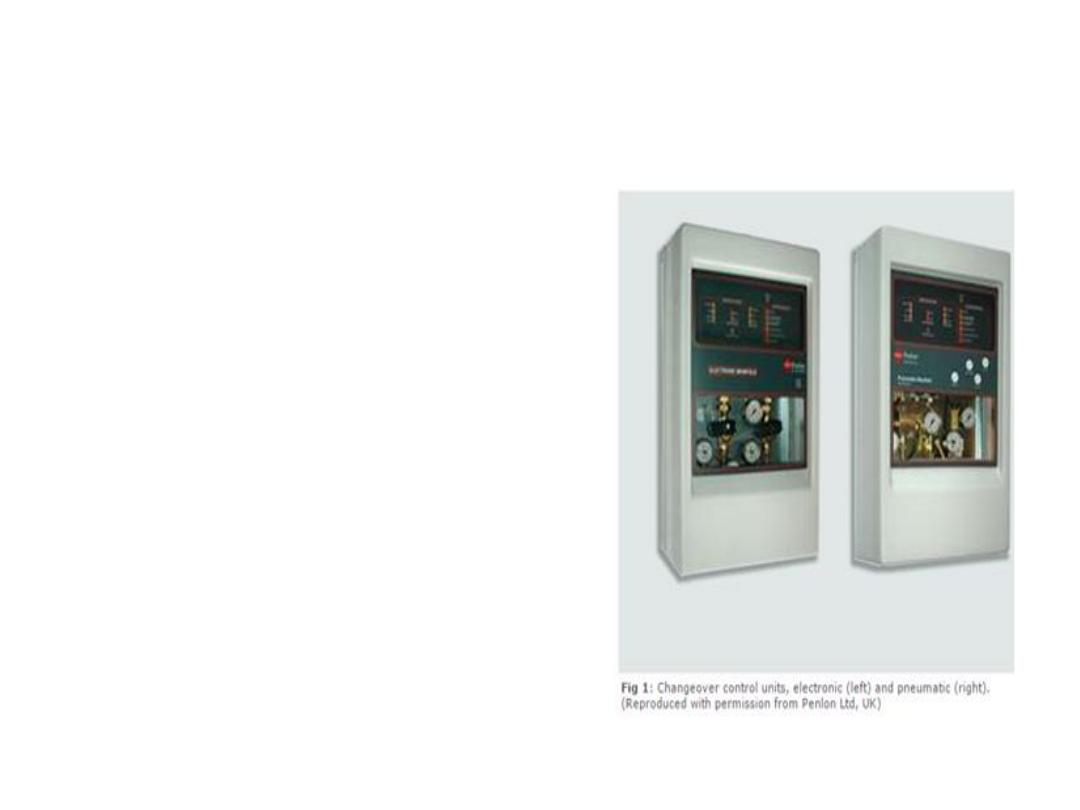
The changeover units
In the normal operation of the changeover
control depends on an electrical supply, the
design ensures that in the event of an electrical
supply failure, there is no disruption to the flow
of gas into the piped medical gas and vacuum
system (PMGV).
On restoration of the supply, the bank running
when it failed started up again.
Cylinders can be changed, or the pressure
regulating valves removed for overhaul without a
loss of continuity in the gas supply.
The changeover unit is provided with monitoring
to detect and display information regarding the
function of the two banks and the pipeline
pressure in cases of fault.
The unit is housed in a lockable, steel enclosure
with a glass fronted door to keep the control
cleans and free from contamination.
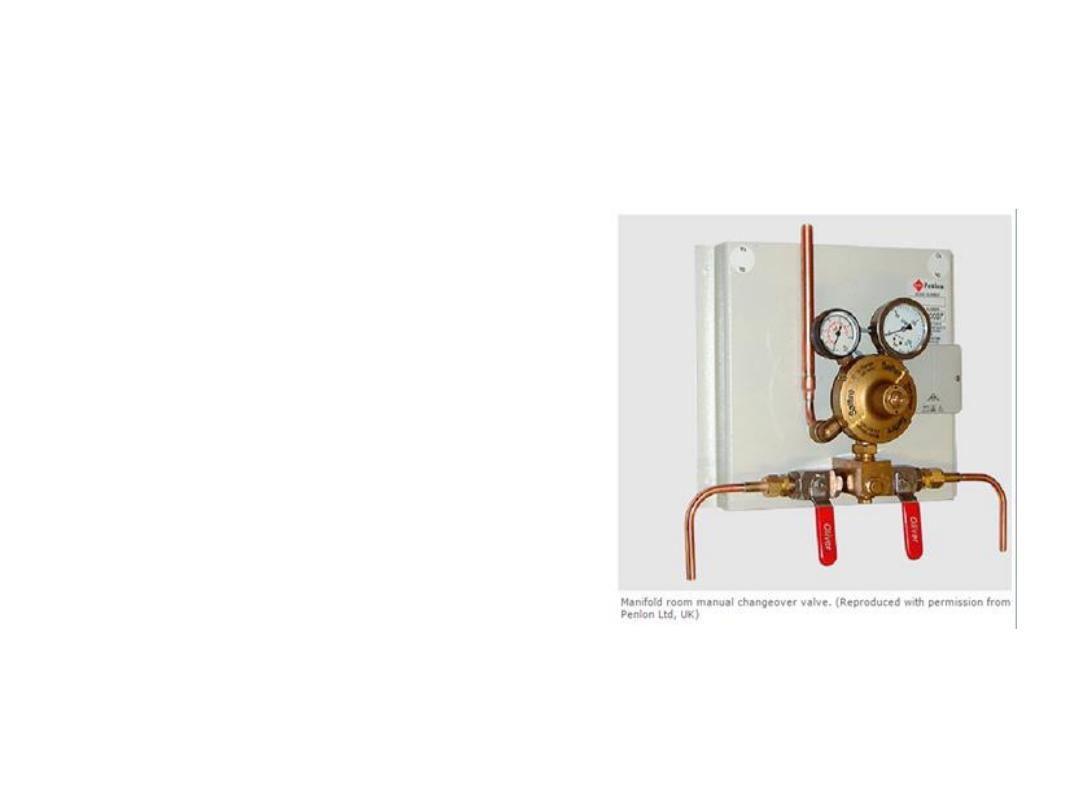
manifolds
For reasons of safety, the manifold is housed in a
well ventilated room, built of fireproof material,
away from the main buildings of the hospital. The
room should facilitate the easy and quick
changing of the cylinders.
The manifold room is not used as a general
cylinder store. All empty cylinders are removed
immediately and any separate emergency
cylinders are full and available for use. They are
checked and the stock is rotated on a regular
bases.
Audio and visual warning systems should be
constantly monitored, and if required, be placed
in multiple locations.
Responsibility for ensuring supplies to the
manifold should be clearly established, defined,
documented and implemented within the
hospital.
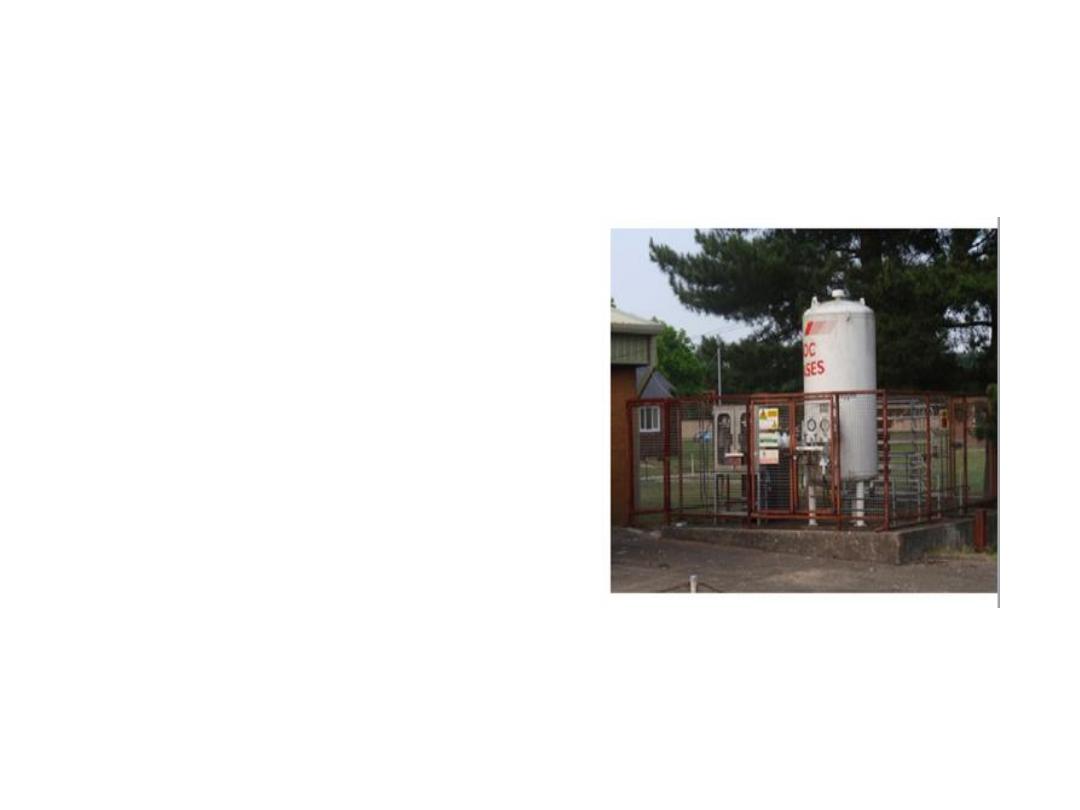
Liquid oxygen
Oxygen can also be stored as liquid, in a vacuum
insulated evaporator made of steel ( the inner wall of
stainless steel and the outer wall of carbon steel). This is
the most economical way to store and supply oxygen,
and allows for easy maintenance and access.
Liquid oxygen is stored at a temperature of – 150 to –
170 ˚C ( below its critical temperature of - 118˚C ) and at
a pressure of 5 – 10 atmospheres. The temperature of
the VIE is maintained by the high vacuum shell (
effectively a vacuum flask).
For a liquid oxygen to evaporate, it requires heat ( the
latent heat of vaporization). This heat is taken from the
liquid oxygen , helping to maintain its low temperature.
The out side surface of VIE is painted white to reduce
absorption of ambient heat.
The VIE should be capable of delivering up to a
maximum of 3000 L/min of oxygen. At a temperature of
15˚C and atmospheric pressure, liquid oxygen can give
842 times its volume as gas. VIEs can be supplied in up
to 50 different sizes depending on the oxygen use in the
hospital.
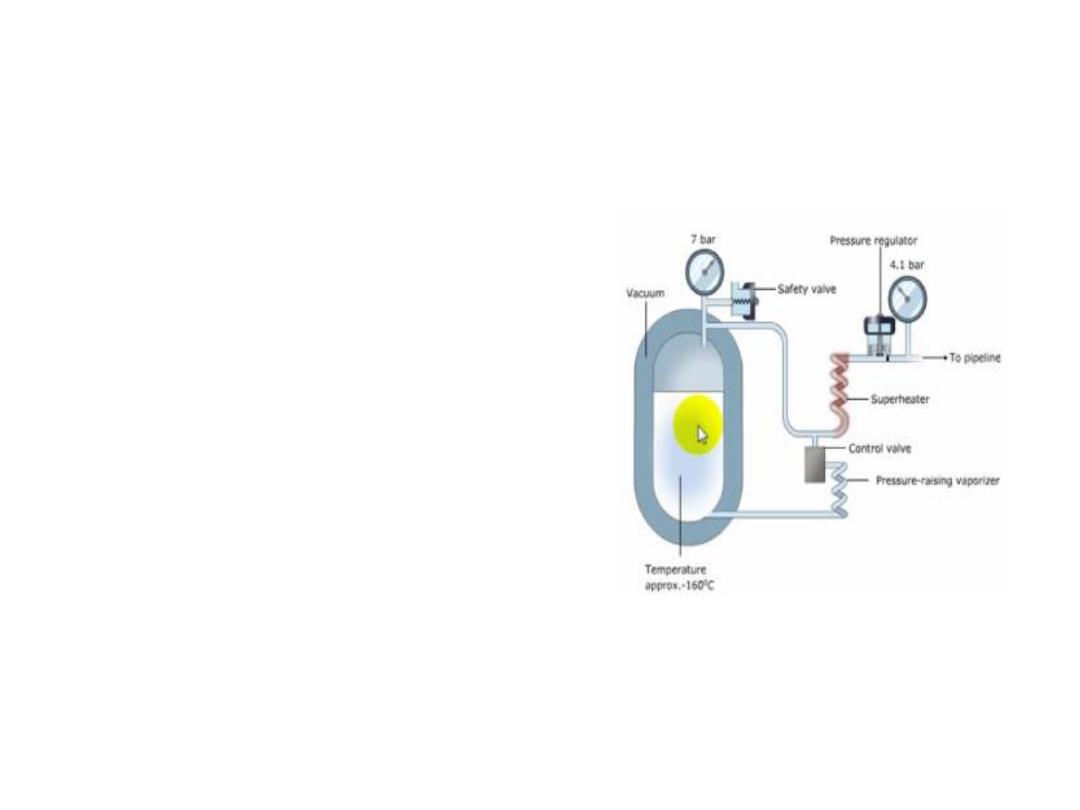
The liquid oxygen supply system
Oxygen pass through a
pressure regulator that
allows it to enter the
pipelines, and maintains the
pressure through the
pipelines at about 400 Kpa.
If there is an under demand
for oxygen, the pressure in
the VIE starts to builds up, a
safety valve opens at 1700
Kpa, allowing the gas to
escape and there by
reducing the pressure.
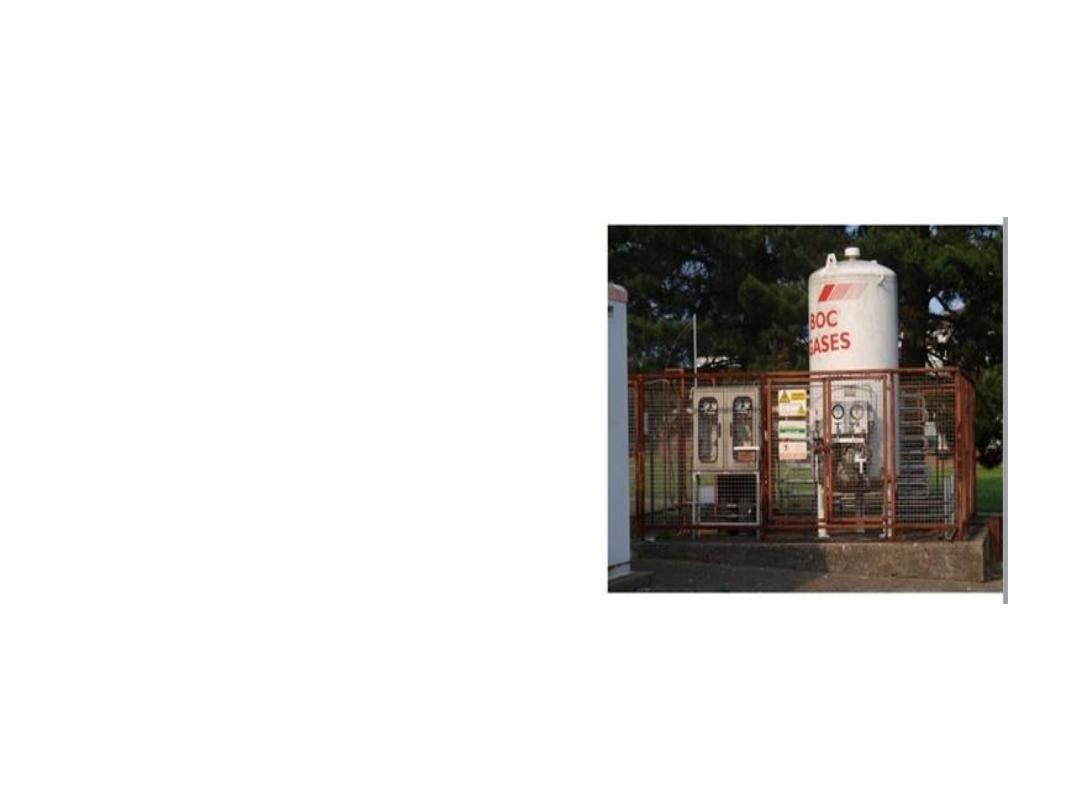
Hazards of central gas supply
Due to the potential fire hazard,
any liquid oxygen storage vessel
should be housed away from
main hospital buildings.
The storage vessel is protected by
a caged enclosure which also
houses two banks of reserve
cylinders.
These reserve banks take over
automatically as the hospital
supply if the VIE out put fails.
The risk of fire is increased in
cases of liquid spillage. Spillage of
cryogenic liquid can cause cold
burns, frostbite and hypothermia.
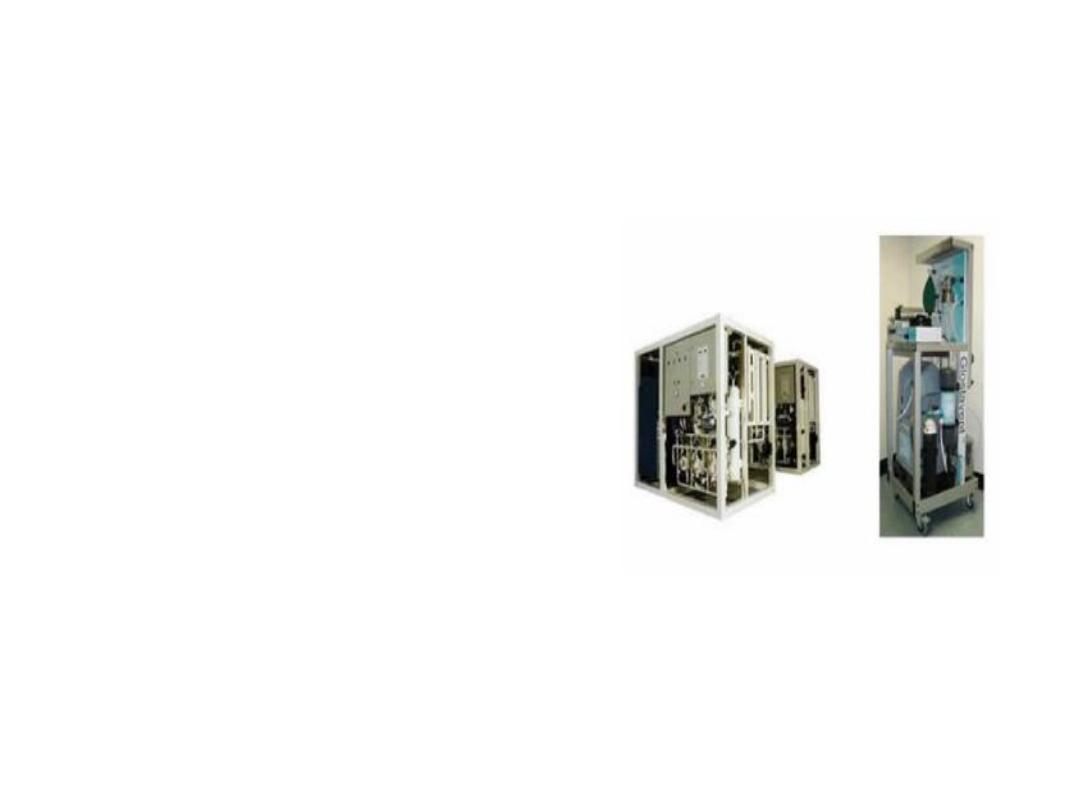
Oxygen concentrators
Oxygen concentrators can be used to
supply oxygen by extracting it from air by
differential adsorption.
Ambient compressed air is filtered and
pressurized to about 137kPa and enters
one of two parallel, alternating absorber
towers located on either side of the
central mix tank, strongly attract nitrogen
molecules, while allowing oxygen
molecules to pass through. By the time
all of the nitrogen and most other
impurities have been removed.
All that remains is the oxygen and trace
amounts of inert argon. This oxygen
passes into the mix tank, completing the
one cycle of the concentrator.
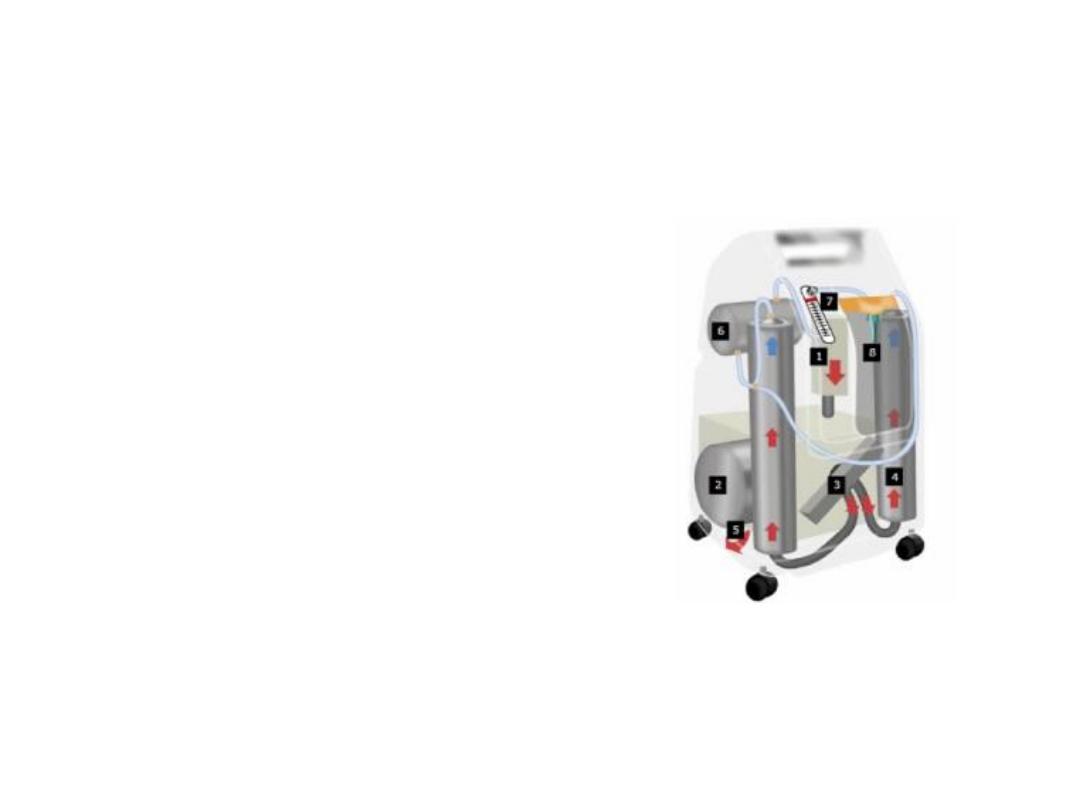
Portable oxygen concentrators
Also available portable
oxygen concentrators that
produce less than one liter
per minute of oxygen. They
use a demand valve to
deliver oxygen only when
the patient is inhaling.
These portable
concentrators plug into the
wall out let using either AC
or DC power.

Session key points
• Cylinder manifolds can be used to supply piped gases
at a constant pressure. Large size cylinders are used in
two banks, duty and standby. There is automatic
changeover between the two banks.
• Liquid oxygen is usually used to supply piped oxygen in
hospitals. It is stored in vacuum insulated evaporators
at a temperature of – 150 to – 170 ˚C ( below its critical
temperature of - 118˚C ) and at a pressure of 5 to 10
atmospheres.
• Oxygen concentrators are used to extract oxygen from
air using differential adsorption. Oxygen concentration
of 93 – 95 % can be achieved.

Session summary
• Learning objectives:
• Define the key components, functionality and
safety features of cylinder manifolds.
• Recognize the important aspects of liquid
oxygen stores ( vacuum insulated evaporators)
and their associated safety features.
• Recognize the key components, functionality
and safety features of oxygen concenterators.
